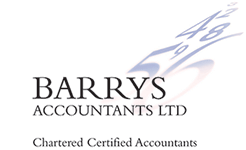Taxpayer victory bucks trend in SDLT row
Stamp duty land tax (SDLT) refund claims have been a target of HMRC investigations over recent years. This is usually due to weak claims for non-residential rates to apply, and HMRC has had a lot of success at the tribunals. However, a taxpayer has just won their case. What was different this time?

SDLT rates are different for residential and non-residential property. The non-residential rates are generally more favourable, particularly for more expensive property as the highest rate is 5%. An important point with classification is that where a single property has a “mixed use”, i.e. some residential and some non-residential, the non-residential rates apply.
Non-residential property includes:
- commercial property, e.g. shops or offices
- property that isn’t suitable to be lived in
- forests
- agricultural land that’s part of a working farm or used for agricultural reasons
- any other land or property that is not part of a dwelling’s garden or grounds
- six or more residential properties bought in a single transaction
A mixed property has both residential and non-residential elements, e.g. a flat above a shop. HMRC has become increasingly concerned about spurious refund claims, e.g. where a public path over part of the grounds was argued to mean the whole property was mixed. However, in the case of Marie Guerlain-Desai (G) the tribunal sided with the taxpayer. G purchased a six-bedroom house situated in around 32 acres of land. Twelve of these acres were mature woodland. G had initially paid SDLT at the residential rates, but claimed a refund on the grounds that the woodland was much more extensive than a typical house of that character. The woodland had public access, and G had obligations to maintain it meaning it was a financial burden on her.
Perhaps crucially, G provided substantial photographic evidence of the woodland to back up her assertions. In contrast, it transpired that HMRC had not sent anyone to visit the site, and had made claims that were completely at odds with the evidence G presented. The tribunal concluded that the woodland was not part of the dwelling’s ground or gardens, and allowed the appeal.
Related Topics
-
Capital gains tax break for job-related accommodation
You’re in the process of selling a property that you bought as your home but because of your job have never lived in. You’ve been told that you’ll have to pay tax on any gain you make, but might a special relief get you off the hook?
-
Should you revoke your 20-year-old option?
Your business has let out a building to a tenant and it is now just over 20 years since you opted to tax the property with HMRC. Should you revoke it so that your tenant no longer needs to pay VAT?
-
Chip shop owner fined £40k for hiring illegal worker
A Surrey fish and chip shop owner has been left in shock after being fined £40,000 for allegedly employing someone who didn’t have the right to work in the UK, even though he conducted a right to work check. Where did this employer go wrong and what can you learn from it?



 This website uses both its own and third-party cookies to analyze our services and navigation on our website in order to improve its contents (analytical purposes: measure visits and sources of web traffic). The legal basis is the consent of the user, except in the case of basic cookies, which are essential to navigate this website.
This website uses both its own and third-party cookies to analyze our services and navigation on our website in order to improve its contents (analytical purposes: measure visits and sources of web traffic). The legal basis is the consent of the user, except in the case of basic cookies, which are essential to navigate this website.